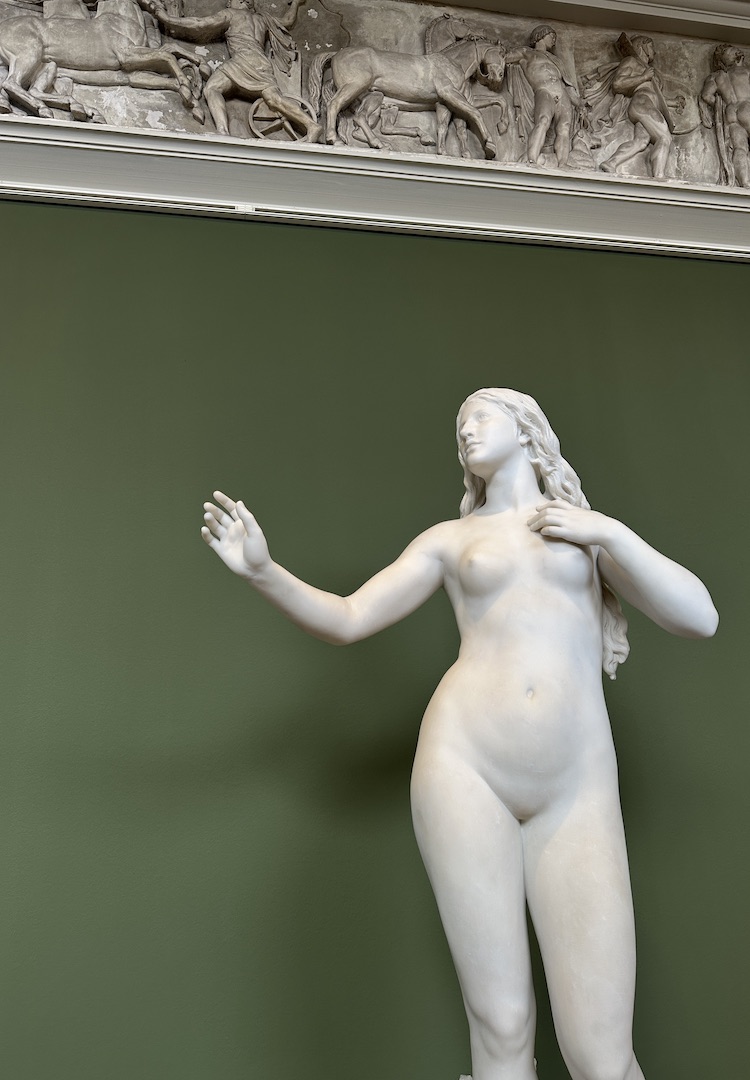Why it’s so important to know what’s in your tampons
Image via TOM Organic/Featuring founder Aimee Marks
Words by Eve Oswald
Chatting to the founder of TOM Organic.
There’s a change in the air. We are becoming more conscious of what we consume and where it comes from. From food to beauty products, many of us are opting to make the switch to organic and natural options. So why don’t we know what’s in our feminine hygiene products?
We chatted with Aimee Marks, founder of TOM Organic, on why it’s so important to know what’s in our tampons.
Hi Aimee, firstly how did TOM Organic come about?
The idea was hatched during a high school project where I was assigned the task of re-designing the packaging of any product in the supermarket aisle. I picked tampons and wanted to design packaging that prevented them from falling out into my handbag.
As I delved into it, the project uncovered a separate breakthrough relating to what was actually in the tampons themselves. I discovered lots of unfamiliar long words that didn’t sound like they should be in contact with the most delicate part of a woman’s body. At this stage, I had been using tampons for a few years and was alarmed that I had never asked the question: what is in these products?
I then found out that feminine hygiene brands do not legally have to list the ingredients in their products. It dawned on me that finding a solution to this problem was far more important and that’s what kicked off my journey to create TOM Organic.
How do TOM Organic products differ from others on supermarket shelves?
Each woman uses more than 12,000 tampons and pads, over an estimated 450 periods, in her lifetime. Being the most absorbent part of our body, it’s important to use products that are as pure as possible.
What many women don’t know is that conventional cotton is the world’s most heavily sprayed crop, using an alarming 25 per cent of the world’s pesticides.
Conventional tampons are also often made with synthetics including polypropylene, viscose, rayon and treated with bleaches, perfumes and other nasty ingredients.
TOM Organic tampons are made from 100 per cent certified organic cotton. Our pads are also made with certified organic cotton. Our choice to use only the purest materials in our products is something we never compromise on.
Why is it so important to know what’s in our tampons and pads?
There is a definite trend of conscious consumerism emerging globally where people are becoming much savvier about the products they buy and the companies they support.
From a product perspective, every person deserves to know what they are putting on or in their body. We encourage our community to be curious – read the ingredients list, find out how your product is made and learn how the companies you support do business.
In particular, when it comes to tampons and pads, it makes a difference to know that our products are made with certified organic cotton, keeping our bodies and our planet free from chemicals, pesticides and plastics!
How do you ensure quality control of your cotton?
Our organic certification ensures there’s no chemical processing from farm to shelf.
To maintain our certification, we have to undergo annual audits ensuring we meet strict requirements along every step of the supply chain. We source our organic cotton from farms that grow the crops at high altitude which means there are literally no pesticides used at all (nor even approved natural alternatives).
Last year we visited one of our organic cotton farms and were blown away by the lengths these farmers take to maintain their crops and ensure that they are 100 per cent chemical-free.
Why are sanitary products taxed here in Australia?
Sanitary products are currently being taxed at 10 per cent under the GST because they are considered a luxury item or non-essential. Menstruating is not a luxury. And sanitary products are not non-essential. Over the years, many organisations and independent groups have lobbied to axe the discriminatory tax on tampons and pads, and we’re fully in support of this tax being lifted.
What are some ways TOM gives back to the community?
We frequently donate product to local initiatives such as the Melbourne Period Project, St Kilda Mums and the Asylum Seeker Resource Centre to name a few. Last year we also launched the TOM Organic Female Empowerment Grant. From over 200 applications we awarded the $25,000 fund to Her Words, an online platform and events series with an ambition to ignite change through conversations.
We are a proud B Corp, and as part of this agreement, we partake in quarterly philanthropic endeavours. We sample products to community initiatives and charitable organisations where there is an alignment and like to think that we’re helping those who benefit from our support.
Our tooshies by TOM brand is in partnership with The Babes Project, where a percentage of sales from our eco nappies and baby wipes are donated to this local initiative helping women experiencing crisis pregnancies.
How does the ‘luxury’ tax affect women who are struggling?
I recently read a stat that women in Australia collectively contribute $30 million from purchases of taxable feminine hygiene products each year. That equates to an estimated $11 per woman per year. So this would have a very real effect on women who are struggling or find themselves without accommodation.
That’s why contributing to these charitable initiatives is so important to us. Very recently the bill to remove the tax passed the Senate in Australia. The next step is to get it through the House of Representatives. We’ve got our fingers and toes crossed.













